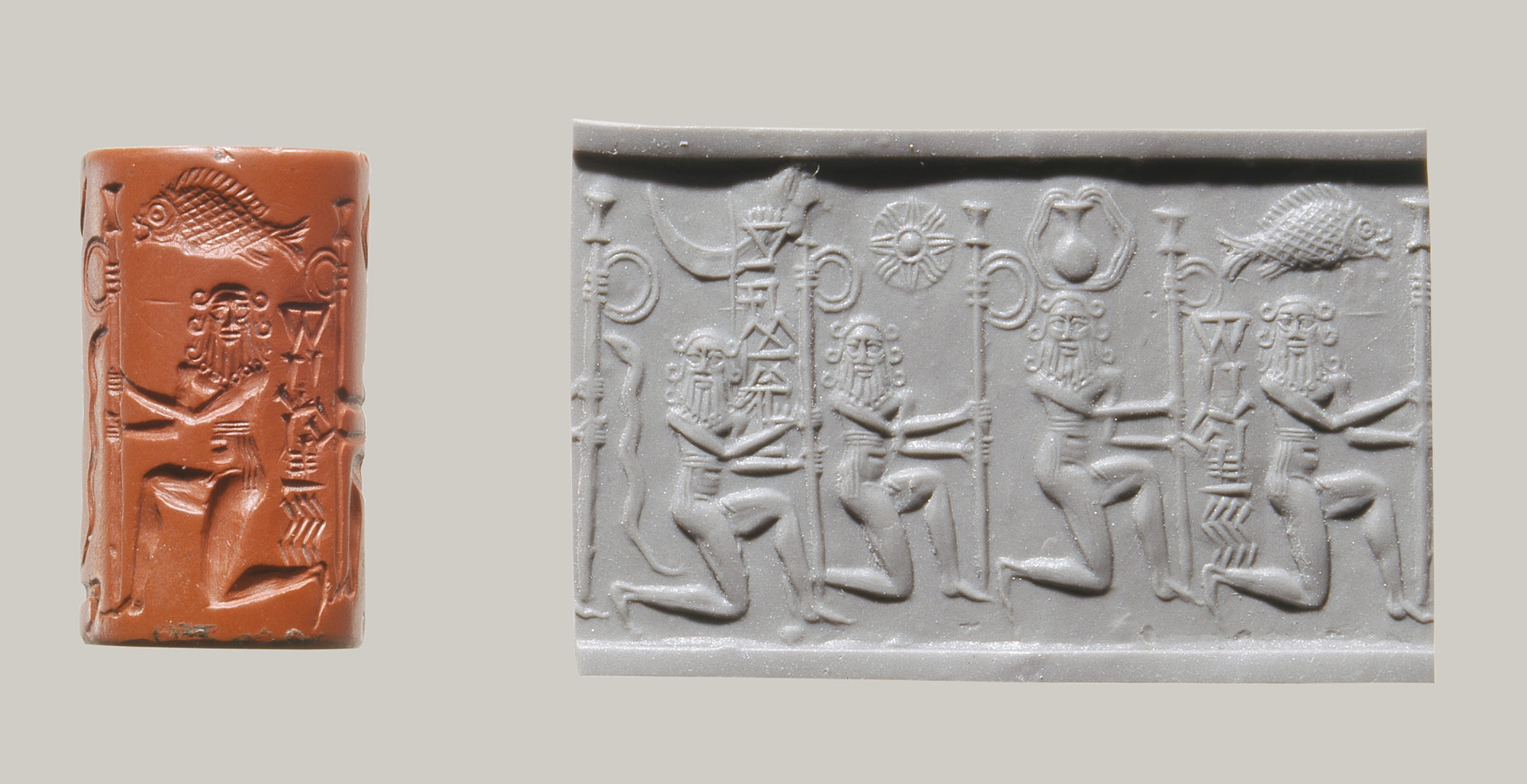Reams have already been written on the drubbing received by the BJP in the crucial Bihar assembly election. Let me attempt to add my own two cents’ worth to the series of postmortem reports that have been released since November 8.
Countdown to Debacle
Team Modi’s explanation for their drubbing in Bihar is that the caste arithmetic went against the BJP. But that could happen only because of the party’s own acts of omission and commission.
The writing was writ large on the wall from the word go, but Team Modi refused to pay heed to it in a timely manner. The main reason why Team Modi lost the Bihar election is that it avoided doing everything that had the potential to divide the opposition, and instead did everything to bring the mutually warring parties together. Determined action against political scamsters would have put the opposition in disarray. However, the failure to do so has created a Frankenstein monster that threatens to not only smash BJP but also destroy India.
People rallied behind Modi in 2014 cutting across caste, class, linguistic, regional, gender and even religious boundaries because of his promise of a corruption free India. Convinced that poverty, unemployment, increasing crime, mal-governance, etc., are all byproducts of the bureaucratic and political corruption institutionalized by previous regimes, the electorate passionately responded to the prospect of Congress Mukt Bharat because the party had become synonymous with scams, untrammeled loot of India and siphoning-off the country’s wealth to foreign shores.
![modi]() People were persuaded that the Congress High Command – namely Sonia Gandhi and her family – were the fountainhead of this corruption. The Vadra-Priyanka land deals, the National Herald scam, the NDTV scam, Jet-Etihad deal, NSEL scam, the CWG scam were the proverbial tips of the iceberg.
People were persuaded that the Congress High Command – namely Sonia Gandhi and her family – were the fountainhead of this corruption. The Vadra-Priyanka land deals, the National Herald scam, the NDTV scam, Jet-Etihad deal, NSEL scam, the CWG scam were the proverbial tips of the iceberg.Therefore, people were expecting Modi government to take strong action in order to bring to account the mafia that executed this loot. Had the Modi government ensured firm and determined action at least in the already exposed above mentioned financial scandals, it would have isolated the Congress Party from other opposition parties. It would also have sent the right signals to the likes to Lalu Yadav, Mayawati and Omar Abdullah. They would all be running for cover instead of launching a vicious campaign against the BJP in general and Modi in particular.
Senior BJP leader Subramanian Swamy kept warning the Modi government not to allow dilatory tactics in the open and shut National Herald case which had reached the concluding stage. Had Sonia and Rahul been convicted of fraud within the first few months of the Modi regime, the country would have celebrated the conviction. Now even if the court orders a well substantiated conviction, the Gandhi family will present themselves as victims of political vendetta.
Even the once despised Robert Vadra is now challenging Modi government’s belated inquiries into his land scam. It is beyond comprehension why the BJP government in Haryana humiliated and persecuted Ashok Khemka, the officer who exposed Robert Vadra’s shady deals, while rewarding all those officers who had assisted Vadra in acquiring huge tracts of land through devious means.
It is no less puzzling why PM Modi went back on his decision to bring an honest officer like Khemka to PMO aftyer announcing it publicly. That gave the impression of BJP government having cut a deal to protect the Gandhi family instead of letting the law take its own course. Like Lalu Yadav, Vadra too will become a hero of the secular brigade and be treated as a martyr if any action is taken against him now. Sensing the change in political equations post Bihar election both Rahul and Vadra are roaring like lions daring Modi to take action against them.
Similarly, if right at the start of Modi’s tenure the scam ridden NDTV, which had become the most prominent symbol of partisan agendas of the media, had been brought to book on the strength of available evidence of financial frauds and hawala transactions collected by the Income Tax Department during the UPA tenure, the company would have faced imminent closure. That would have sent a clear message that the days of “paid media” were over. Instead, Modi supporters were shocked to find that the BJP government was going out of its way to shield the tainted television network. The former Director of Enforcement Directorate Rajan S. Katoch known to be a P Chidambram flunkey was given an extension by the Finance Minister.
After the Bihar debacle, the Enforcement Directorate has issued a Rs. 2030 core notice to NDTV, but the action has been only under the relatively mild FEMA and not under the more stringent money laundering Act. This may prove to be a case of too little, too late. NDTV too will go scream vendetta and get loads of support from Modi baiters despite being caught in serious financial frauds.
The flip-flops over retrieving black money siphoned out of India, followed by an utterly ridiculous and draconian law for the ostensible purpose of bringing back the looted wealth topped with the final declaration that “there is no black money abroad, it’s all at home,” made the Modi government appear indecisive. Veteran Supreme Court lawyer Ram Jethmalani kept shouting from roof tops that the German government had expressed willingness to provide to the Indian government the entire list of culprits holding secret foreign accounts abroad, if only the government made an official request for the same. However, the BJP government’s steadfast refusal to secure the list from Germans put a shadow of doubt on it. The finance ministry may have buried the whole issue but it is alive in public memory as a major let down. So confident are Congressmen of being protected that they openly ridicule Modi for his false bravado in claiming to bring back India’s looted wealth.
While the prime minister seems to have put some of his own cabinet colleagues under strict watch in order to curb their propensity for corruption, letting his select ministers a free hand, despite their unsavory credentials along with the protective attitude towards the rogues of the previous regime, cast a pall of gloom among all those who had gravitated to him in the hope of ushering in a ‘clean India’ – both physically as well as morally.
The continuation and even promotion of rogue officers owing allegiance to the tainted UPA regime, gave a clear signal to the opposition that this government lacked the guts to confront and book the corrupt. This let down on the anti corruption drive, despite repeated warnings led, erstwhile close friends and supporter like Ram Jethmalani to actually go and address public meetings in Bihar in order to appeal to voters to defeat Modi and support Nitish Kumar because the PM had let down the country by protecting the crooks of the UPA regime.
![sonia gandhi]() The Opposition parties wouldn’t have dared to rally behind Sonia Gandhi nor would the latter have had the guts to act so belligerent had this government released the list of black money account holders that is suspected to include the name of Sonia Gandhi and other Congress bigwigs.
The Opposition parties wouldn’t have dared to rally behind Sonia Gandhi nor would the latter have had the guts to act so belligerent had this government released the list of black money account holders that is suspected to include the name of Sonia Gandhi and other Congress bigwigs.In short, a serious anti-corruption thrust, through due process would have divided the Opposition and brought many fence sitters come knocking at BJP’s door. This would have also kept the enthusiasm and idealistic dream of the youth alive that Modi government has the political will to free India of corruption. To top it all, Modi allowed the Opposition to put his government on the defensive by bringing in the highly ill-advised Land Acquisition Ordinance. The stigma of being anti-farmer along with the taint of being a shielder of scamsters enabled even Yadav to resurrect himself as a champion of democracy.
Walking into the “Intolerance” Trap
While avoiding all those actions that had the sure shot potential to divide the opposition, the BJP has done all it could to unite the opposition. The Narendra Modi of the highly-charged campaign for the 2014 general elections that brought BJP to power on its own steam seems an altogether different avatar from the one that fought the Bihar election of 2015. At that time, he talked like a statesman with his “Sabka saath, sabka vikas” (Together we stand, for development of all) slogan that fired the imagination of all those tired of the prevalent divisive politics of caste and religion.
While a divided opposition tried to run a shrill campaign projecting Modi as a divisive figure, the BJP’s prime ministerial aspirant was widely perceived as someone who would deliver for the general well-being of the nation if elected to the country’s supreme office. His own stellar track-record in Gujarat made him appear to be the best equipped to lift the country out of its third-world mindset to establish it as a world leader among the comity of nations.
One of the most awe inspiring moments of that historic campaign was the Hunkar (Battle Cry) Rally at Patna’s Gandhi Maidan. Modi had been warned by the security agencies about the high likelihood of bomb explosions. But he braved addressing that rally of over 500,000 even while bombs kept exploding as he was addressing the admiring audience.
Next day the police discovered several unexploded bombs under the very stage on which he stood. Modi knew he was standing in the jaws of death but spoke with such calm that no one in the charged gathering got a hint of what was happening right in the midst of that mammoth crowd. His main message to the audience reverberated with positive energy:
Hindus have a simple choice — either fight against poverty or fight against Muslims. Likewise, Muslims too have just one choice — fight against Hindus or fight against poverty.
Not surprisingly, he got a resounding endorsement for his “sabka saath, sabka vikas” vision, not just from Muslims and Hindus present in that rally but also from millions who watched Modi’s performance in that rally on TV.
In that situation, a divisive politician would have ranted against his opponents for having tried to sabotage his rally and get him assassinated. But Modi didn’t breathe a word about the explosions because he knew it could at once trigger communal mayhem since Muslims and JDU leaders would have been prime suspects. At the conclusion of the rally, Modi advised people to disburse peacefully, avoid stampede like situation so that each one reached home safe.
When people returned home and found out that the blasts had left six dead and over 80 injured, they realized the importance of the “reach home safely” message and his warning against divisive agendas. That day in the eyes of most people, Modi established his credentials as the man of the moment for India who would put an end to politically engineered sectarian strife.
However, after becoming PM, Modi seems to have forgotten his own deftly crafted script of inclusive politics. Not that his government did anything concrete against the Christians or Muslims. But as PM, Modi failed to define the terms of political discourse as he did during the run up to May 2014 election victory.
The humiliating defeat of the BJP in Delhi should have woken up the party that its survival in power depended on a divided opposition. To defeat BJP in Delhi, every party—whether regional or national—pitched in their bit to stop the Modi juggernaut by orchestrating and unleashing a high decibel smear campaign against BJP as a party that endangers religious minorities and is “intolerant” towards political dissenters. The hitherto divided parties had ganged up together and began a sinister campaign to put BJP on the defensive.
A couple of months prior to the Delhi assembly election, a series of alleged attacks on Christian institutions mysteriously happened in quick succession – in Delhi of all the places. This city hasn’t had a history of attacks on Christian community despite hosting a huge number of prominent Christian institutions.
To add fuel to fire, a Hindu Muslim riot was engineered in one of the trans-Yamuna colonies which the Aam Aadmi Party (AAP) was nursing as its special constituency. This enabled the combined Opposition along with Christian and Muslim leaders to build hysteria against Modi government alleging that these ‘attacks” are part of the “fascist” agenda of Modi government.
![church]() Church-affiliated bodies and the Delhi-centric English TV and print media put the onus on “extremist right wing Hindu organizations” which are cleverly projected as offspring of the BJP even when they have been propped up by the Congress Party.
Church-affiliated bodies and the Delhi-centric English TV and print media put the onus on “extremist right wing Hindu organizations” which are cleverly projected as offspring of the BJP even when they have been propped up by the Congress Party.In the first of these six alleged attacks in December 2014, a fire damaged St. Sebastian Church in Dilshad Garden. The Special Investigative Team (SIT) exposed that the fire was caused by faulty electrical wiring in the Church. The SIT report to the Home Ministry emphatically stated that, “There was no attempt made by anyone to trigger off a religious hate crime and neither was it the result of polarization on religious lines. It was a clear cut case of short circuit which was blown out of proportion by a section of people.”
In a second incident in Jasola it was alleged that a group of miscreants threw a stone and shattered a windowpane. The police investigation revealed that it was due to a group of kids playing outside, which resulted in a stone landing inside the church. There was no evidence as yet of any communal angle.
The third incident in Rohini, in which the Christmas crib was charred, was determined by the police to be the result of an electrical short circuit.
The fourth incident in Vikaspuri, in which a small group of men allegedly broke the glass windows of a church and toppled the statue of Mother Mary kept in a glass enclosure outside the Church, turned out to be the result of a drunken dare. What’s more, they were caught on CCTV and arrested shortly thereafter by the police and have confessed to the crime. Again, there was no evidence whatsoever of a communal angle.
The fifth incident in Vasant Kunj, was found to be a case of minor burglary.
The sixth incident in Holy Child School, Vasant Vihar involved case of theft of Rs 8,000 by an insider. But it was blown up as yet another “attack on Christians.”
Even in an open and shut case like the Vikaspuri incident in which the perpetrators were caught and confessed to the drunken dare, Delhi Archbishop Anil Cuoto maintained in the face of the evidence that he was dissatisfied with the police explanation, without explaining how the CCTV footage and the perpetrators’ own confession go against his version.
Even the high-profile case of the alleged rape of a 71-year-old nun at a convent in West Bengal turned out to be the handiwork of a Bangladesh-based gang in collusion with employees of that convent. Ironically even though the attack itself took place under super secular chief minister Mamta Bannerjee’s regime, the blame of it came directly on Modi as though he had personally hired the attackers.
In the case of a petty theft in Holy Child School, HRD Minister Smriti Irani personally rushed to the school give assurance of quick action. But in effect it lent credence to the “attack” theory. PM Modi also called the Police Commissioner and gave strict instructions to set up a special monitoring system to protect churches. All these seemed like defensive measures and only emboldened BJP baiters.
Although each one of them were incidents of petty crime or minor accidents, the Indian media led a hysterical campaign to tar India as a place of “growing intolerance.” This chorus by respected leftist and “liberal” intellectuals was avidly picked up by the international media which in any case delights in bashing “Hindu India.”
The absurdity of this charge becomes more obvious when you consider the comparative figures for similar or even more serious incidents involving Hindu temples in the same period.
As per police records, 206 temples, 30 gurudwaras and three churches (out of some 200 or more churches in Delhi) and 14 mosques were burgled during 2014. And such crimes didn’t mysteriously start to occur in May 2014 after the BJP’s victory — as with other crimes, they routinely occur every year in Delhi as the data shows. Despite the facts pointing in one direction, church leaders and commentators, both in the domestic and foreign media who parrot their line, continued to insist that there’s a pattern to the incidents, the motivation is communal, and the BJP or affiliated groups are the key culprits in promoting “intolerance”. Similarly, a couple of instances of reconversion of a small group of Muslims to Hinduism accompanied by a few statements in favour of “Ghar Wapsi” by stray members of Sangh Parivar – came to be used as ultimate proof of BJP government endangering religious minorities. By contrast, wholesale conversions to Christianity in several regions of India through means fair and foul and systematic change in the demographic profile of border states due to large scale illegal Bangladeshi migrants pushing out Hindus from their ancestral villages is not an issue with our “sickularists”. The lackluster approach of the Modi government in handling this duplicity provided its opponents with yet another stick to browbeat it with.
On February 5, just two days before the Delhi election, when prohibitory orders were well in place against holding any unlawful assembly, in pursuance of the Central Election Commission (CEC) guidelines, a major demonstration to condemn “religious intolerance” of BJP government was staged outside the Sacred Heart Cathedral in Delhi’s Lutyens zone.
Interestingly several leaders of the AAP that was trying to stage a second coming after a disastrous first term in the city state, prominently took part in it. The Delhi Police managed to break the demonstration without any untoward incident. However, by that afternoon, the media was widely reporting how the cops had prevented a democratic protest against “religious intolerance” and had “bundled (protestors) into waiting buses”. This became yet another proof that Modi regime poses a menace to India’s democracy. All this mischief could have been nipped in the bud if only the government had grabbed the bull by the horns and published a white paper to expose the sinister purpose behind misleading reports of attacks on Christian institutions. In addition, it should have issued a stern warning to all those spreading misinformation that they would be booked under section 153 & 153A of IPC for vitiating social atmosphere and spreading disharmony among religious groups. A couple of such convictions would have put the fear of law in the minds of those willfully spreading disinformation and halted the tsunami of hate campaign that soon followed.
But since Modi government appeared defensive it enabled the national media and Opposition parties to tar it internationally. Global networks of the Church played on the hysteria to the hilt and Modi-ruled India was declared as a place that made life unsafe for Christians and Muslims.
The frenzy thus generated emboldened, Modi’s “good friend” Barack Obama to give a stiff sermon to the PM on the need to curb the growing religious strife and intolerance. This set the “intolerance” discourse in stone with BJP government haplessly taking all the drubbing.
The very same forces that had worked hard to bring Modi down as Gujarat CM and prevent his rise to power as PM were back in full force. But the Modi government remained smug in the belief that his popularity wave would conquer all as in May 2014. When the results of the Delhi poll were out, the BJP, the strongest contender to Delhi was all but routed by a mere two-year old AAP. Not surprisingly, “church attacks” stopped as soon as the BJP was trounced in Delhi.
The biggest take away from the Delhi poll was that a united opposition aided and abetted by the intellectual fire power of the “secular” gang in the national media could easily defeat the BJP. And yet no lesson was learnt.
Instead of winning over sections of the Opposition parties, Modi allowed them to consolidate a united front against the NDA government. In the run-up to Delhi elections, Modi government at least tried to defend itself against false charges, however ineffectively, but in the run up to Bihar election, Modi himself fell in every trap laid out for him and his party.The most inexplicable act of omission was with regard to theSeptember 28 lynching of Mohammad Akhlaq in Dadri (Uttar Pradesh) allegedly on account of beef eating.
All that Modi had to do was to issue a strong statement saying that though the cow is indeed sacred for his party but human life is no less sacred for BJP. Therefore, anyone harming another human being under the guise of cow protection would be dealt with sternly.
In addition, Modi should have conveyed a strong message to Akhilesh Yadav to expedite the investigation and punish the guilty. BJP should have gone on the offensive against SP government for failing to book culprits.
Instead the mysterious silence of Modi on this issue enabled his opponents to attribute it to Modi’s complicity in encouraging mob action. Even as the sinister plot behind the Dadri killing is slowly unravelingand the Samajwadi Party has failed to charge sheet the accused, Modi’s mishandling of this incident caused irreparable damage to the BJP’s image. ![kalburgi]() This was followed by the murder of “rationalist” writer MM Kalburgi in Karnataka. Even before police began investigations, the murder was attributed of BJP. Although it took place in a Congress ruled state, no one grilled the Congress chief minister for failing to nab the culprits.
This was followed by the murder of “rationalist” writer MM Kalburgi in Karnataka. Even before police began investigations, the murder was attributed of BJP. Although it took place in a Congress ruled state, no one grilled the Congress chief minister for failing to nab the culprits.Instead the target was Narendra Modi himself whose steadfast silence on the issue was exploited to build a case that his party men were guilty of the crime. Similarly, the media has earlier insinuated the participation of “hard line Hindutva groups” in the murder of rationalists Narendra Dhabolkar, and Govind Pansare in Maharashtra.
Dhabolkar was killed when a Congress-led coalition government was in power in Maharashtra. What is interesting is the fact that Dhabolkar once vehemently argued against the canonization of Mother Teresa by the Vatican Church, while Pansare had been highly critical of some very powerful god men, some with close Congress links. Till date their killers have not been caught but the Congress governments have not been called to account and the blame is put squarely at BJP’s doorstep.
The astute manner in which Congress and Left parties got several past winners of Sahitya Akademi awards to return their trophies as a mark of protest against “rising tide of intolerance” in India under PM Modi should have come as a wake-up call.
Although several commentators in the mainstream and social media called the political credentials of the protesting artists to doubt, the drama got wide coverage in the national and international media. The Award Wapsi Brigade may not have carried any electoral clout in Bihar but they certainly succeeded in building a negative aura around BJP and Modi and gave the much needed boost to the morale of the newly united opposition parties. Even the tainted and convicted Lalu Yadav strutted around like a proud peacock because the media treated him like a prized warrior in their desperate bid to defeat Modi. This disgraceful drama could not have been orchestrated with such finesse had the government booked those spreading false information in the run up to Delhi elections.
To use an analogy, a now united opposition kept throwing banana peels in the path of the BJP, and the party for its own part, kept unfailingly slipping on them more by their acts of omission than any serious harm they did.
Undervaluing Intellectual Firepower
Worse still, instead of defusing the hate campaign, the Modi government added fuel to the fire by appointing an undistinguished Bollywood actor and producer as the director of Film and Television Institute (FTII), Pune, a strong bastion of leftist film makers.
So inappropriate was this choice that even long time BJP supporters were left aghast. True, the left would have raised hell no matter who the BJP government appointed because they cannot tolerate the loss of their monopoly over key positions of power after the defeat of Congress Party.
But by handpicking utterly inappropriate persons for key portfolios in academic and cultural institutions, the BJP gives the message that it is both talent deficit and talent averse. This makes it more vulnerable becausethe enormous intellectual talent pool that gravitated towards Modi in the run up to May 2014, election feels repelled by the party’s low grade choices.
The Modi of the 2014 Lok Sabha elections had created disarray in the opposition by putting them all on the defensive. But the Modi of the 2014 Delhi elections as well as the 2015 Bihar elections was fighting a defensive battle against a combined opposition because the agenda was set by his enemies.
Just as church attacks ceased the moment the BJP was defeated in Delhi so also the beef related violence vanished along with award wapsi campaign as soon as the BJP was trounced in Bihar.
The only unifying glue for the opposition is a crass variety of “secularism”, these days aptly described as “sickularism.” And Modi himself supplied them this glue in such an abundant measure that even sworn enemies like Nitish Kumar and Lalu Yadav became firm allies.
Fatal Flaw of the BJP
A long standing fatal flaw of the BJP is that while it puts great emphasis on the hardware of politics–namely electoral mobilization through dedicated party cadre, they show little awareness of the need to develop high-quality software of politics, which comes from cultivating intellectual firepower and academic talent which plays a crucial role in defining the political narrative of the day.
It’s regrettable that Modi has allowed the Congress and Left monopoly in this regard to stay intact.The Congress party deftly used the education and culture ministries to garner a national and international network of intellectual warriors. Nurul Hasan as Indira Gandhi’s Education Minister laid the foundations of this empire while Arjun Singh, Kapil Sibal and others added further reinforcements to that citadel by extending their net of patronage far and wide among left oriented intellectuals around one point agenda – make them full time warriors against the BJP.
Their discourse has made the BJP synonymous with “fascist” politics, while washing away the blot of thousands of caste and communal riots from the face of the Congress. The BJP has never dared challenge this defamation either through courts or by countering it with its own intellectual firepower.
If one looks at the appointments to key positions in institutions, it appears that the Modi government has communicated disdain for the world of academia and intellectuals or at best is unaware of the importance of these institutions.
Today, Congress appointees openly sneer at Modi government’s talent deficit saying they have none to replace us. The BJP government doesn’t seem to realize that moral legitimacy of regimes is created by well-honed intellectuals.
Even his Skill India Mission cannot succeed if it does not have solid intellectual foundations. No country can become a global power in the 21st century by merely training good plumbers and electricians. Universities and other knowledge hubs act as shapers of public discourse and political narratives, a game that the BJP is losing fast.
![orop]() Another blunder of Team Modi was the inexplicable delay in implementing the One Rank One Pension promise which led the army veterans—once avid supporters of Modi—to sit on a 70-day long dharna and hunger strike against the BJP government. Many of them actively campaigned against BJP in the Bihar election.
Another blunder of Team Modi was the inexplicable delay in implementing the One Rank One Pension promise which led the army veterans—once avid supporters of Modi—to sit on a 70-day long dharna and hunger strike against the BJP government. Many of them actively campaigned against BJP in the Bihar election.Finally, it didn’t help that the BJP’s campaign in Bihar sidelined local leaders who were rendered invisible and inconsequential during the election campaign. The election team airlifted outsiders to go and camp in Bihar while local leaders were denied any meaningful role. There was widespread anger against arbitrary choice of candidates, especially those with criminal track records. Today it is the BJP rank and file that is accusing “the party with a difference” of having become “a party with arrogance”.
Bihar is the last wake up call for PM Modi. He better realize that failure is not an option for him since the people of India have reposed enormous faith in him to deliver a model of governance and economic growth that would help India gain a respectful place in the comity of nations.
(These are the author’s personal views)
Madhu Kishwar Madhu Purnima Kishwar is a professor at Centre for the Study of Developing Societies and founder of Manushi–a human rights/ women’s rights organization. Among others, she is the author of “Modi, Muslims and Media” ( Manushi Publications), Zealous Reformers, Deadly Laws, (Sage Publishers), Deepening Democracy–Challenges of Governance & globalization in India ( Oxford University Press), Off the Beaten Track: Essays on Gender Issues ( Oxford University Press), Religion at the Service of Nationalism & Other Essays ( Oxford University Press). http://indiafacts.co.in/lessons-from-bjps-bihar-election-fiasco/ 

 Sree Iyer
Sree Iyer 






 Mushtagh Ata
Mushtagh Ata

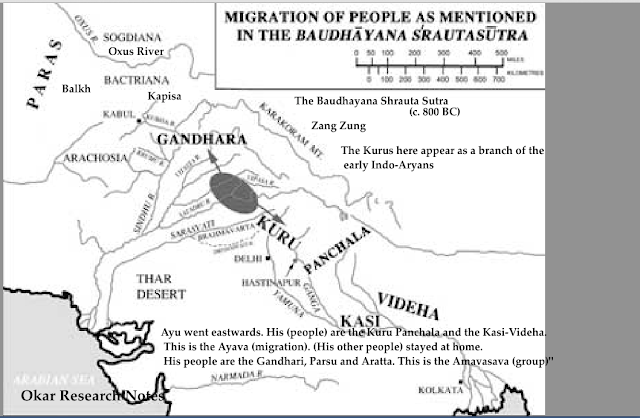
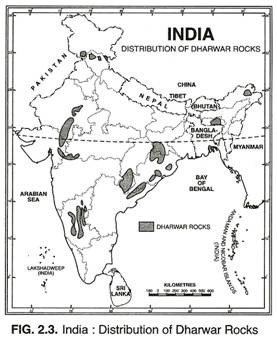





















 Subramanian Swamy
Subramanian Swamy 




 Rupa Subramanya
Rupa Subramanya  Jagdish Shetty
Jagdish Shetty 
 Anjali
Anjali  Arun Iyer
Arun Iyer 
 Tufail Ahmad
Tufail Ahmad 









 Copper plate inscription. Antelope. Short tail upturned. Trough in front.
Copper plate inscription. Antelope. Short tail upturned. Trough in front.
































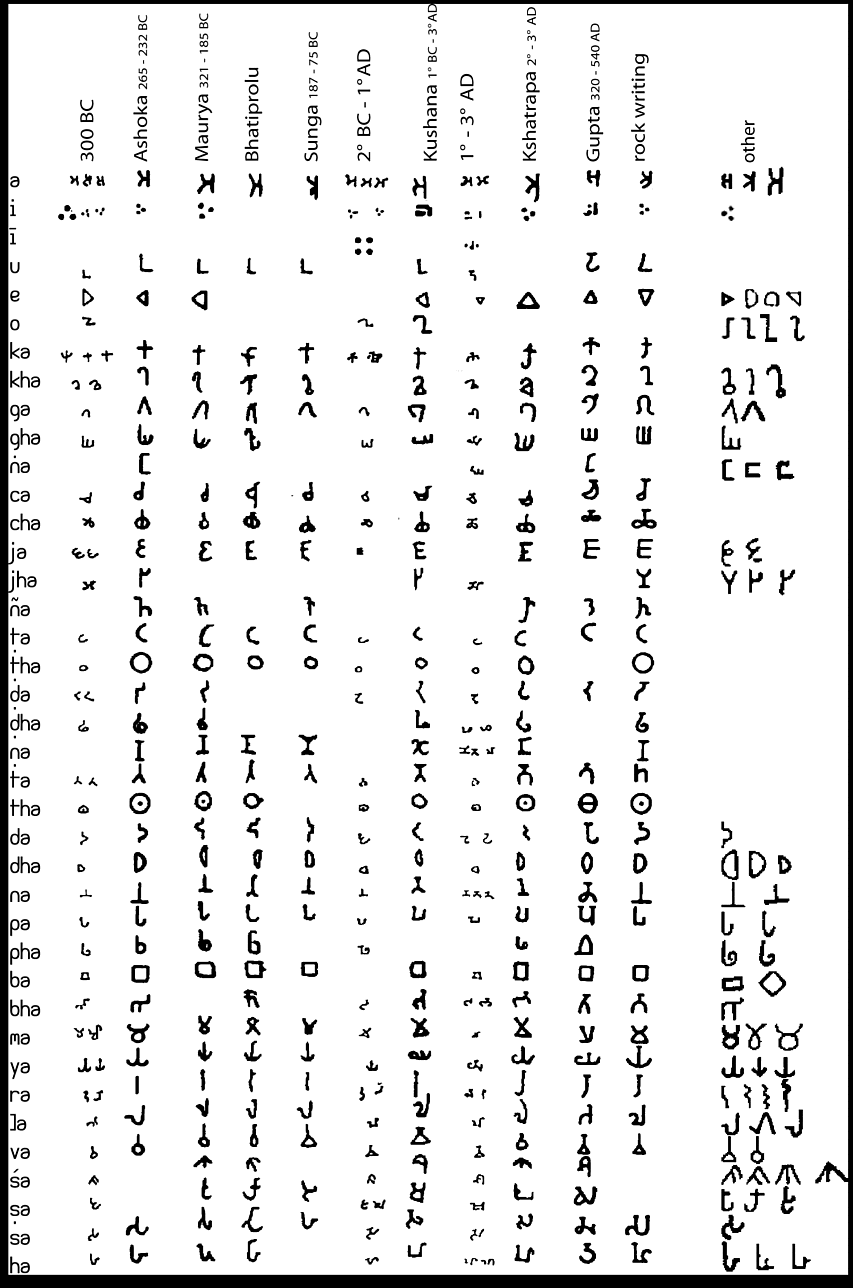
 Mohenjo-daro. m1457 Copper plate with 'twist' hieroglyph.
Mohenjo-daro. m1457 Copper plate with 'twist' hieroglyph. 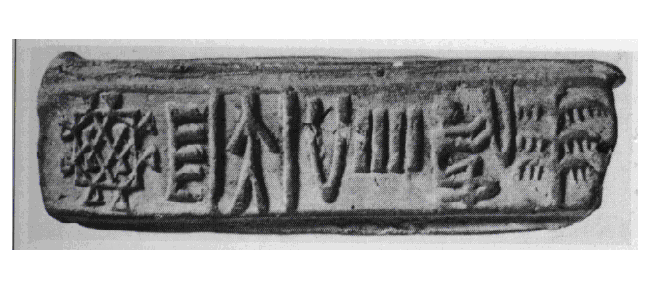 m478a tablet
m478a tablet

 The Shahdad standard has the 'twisted strand' hieroglyph together with tree, zebu, lion, woman. kuTi 'tree' rebus: kuThi 'smelter' poLa 'zebu' rebus: poLa 'magnetite' arye 'lion' rebus: Ara 'brass' meD 'twist' rebus: meD 'iron, copper, metal'. kola 'woman' rebus: kolhe 'smelter' kol 'working in iron'.
The Shahdad standard has the 'twisted strand' hieroglyph together with tree, zebu, lion, woman. kuTi 'tree' rebus: kuThi 'smelter' poLa 'zebu' rebus: poLa 'magnetite' arye 'lion' rebus: Ara 'brass' meD 'twist' rebus: meD 'iron, copper, metal'. kola 'woman' rebus: kolhe 'smelter' kol 'working in iron'.



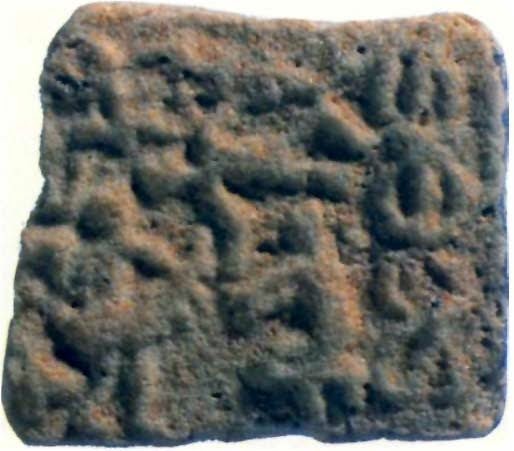













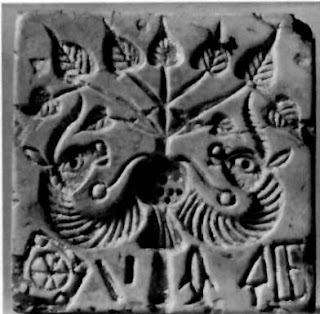










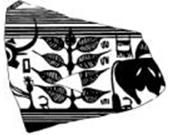



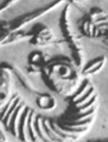




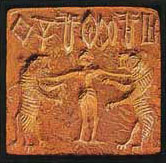



 Magnetite and pyrite from, Piedmont, Italy.
Magnetite and pyrite from, Piedmont, Italy.

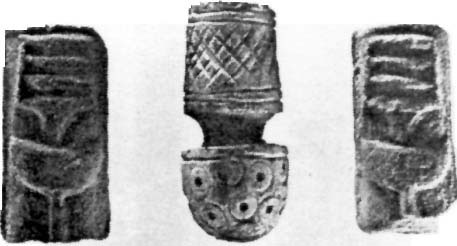
 Other examples of 'standard device' in front of one-horned young bull. The second from r. is an example of the 'standard' as an object.
Other examples of 'standard device' in front of one-horned young bull. The second from r. is an example of the 'standard' as an object. 'Eye' hieroglyph shown on Kuwait gold disk signifying kanga 'portable brazier' Rebus: kanga 'fireplace, furnace'
'Eye' hieroglyph shown on Kuwait gold disk signifying kanga 'portable brazier' Rebus: kanga 'fireplace, furnace'


